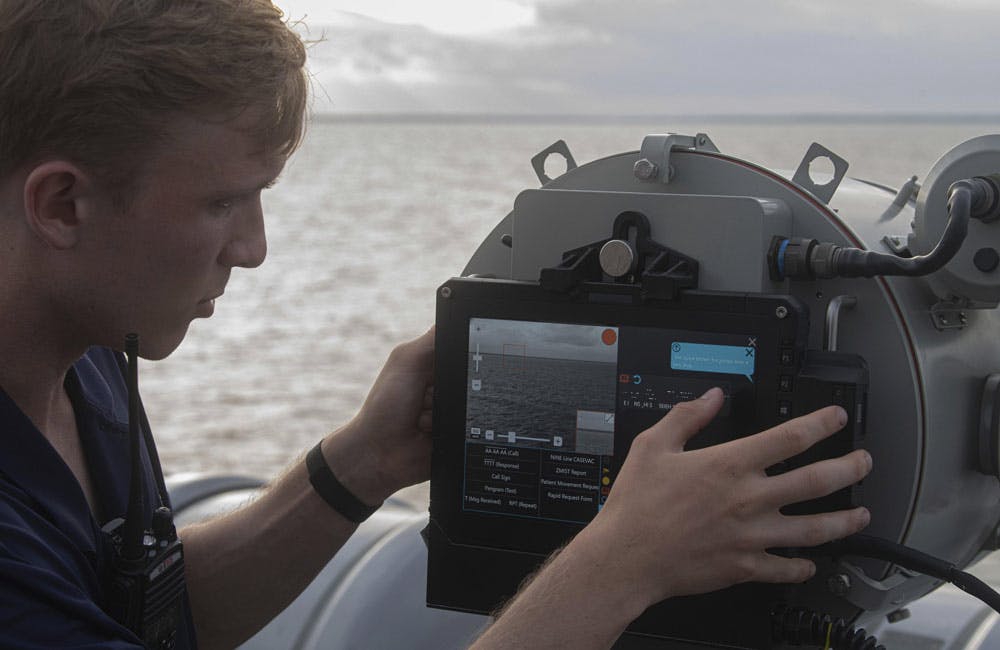Federal agencies all face the common challenge of filling positions across the IT workforce, especially in artificial intelligence. To help overcome it, AI workforce experts are looking to build a robust and diverse AI talent pipeline from across a variety of stages of education and career growth.
AI workforce professionals across academia and the Defense Department explained key strategies, considerations and practices to strengthen the federal AI workforce pipeline during GovernmentCIO Media & Research’s AI Gov: National Security event last week. Stanford Human-Centered AI Deputy Director Michael Sellitto said that there are several areas of work across the AI field and that filling those positions requires diverse expertise.
“It’s not just one kind of skillset,” Sellitto said of AI. “You have the technical AI researchers, the developers and engineers that are building the systems. You have experts in human impact of the technology, policy experts, ethicists, social scientists, humanists who can understand enough about the technology to help understand what are the potential risks and opportunities? … And then the users.”
Georgetown Center for Security and Emerging Technology Research Fellow Diana Gehlhaus added that the IT and AI fields overall face the challenge of educating students and young professionals that the AI field requires a variety of talents beyond the technical, making the field more open to a wider range of skills and individuals than traditionally thought.
“One challenge is informationally really helping people understand as they’re approaching their career and educational decision-making, all the different types of jobs that are going to be out there that are needed — the different roles and responsibilities that are involved in AI design, development and deployment and what that means and making sure that our educational infrastructure is set up in a way that we can grow, cultivate and train talent,” Gehlhaus said.
To diversify the talent pipeline, Gelhaus said it will be critical for educational institutions and organizations to reframe career pathways to highlight interconnected avenues of pursuing AI, as well as encourage and energize people to embrace the variation of careers within the AI field.
Sellitto added that increased investment in STEM education and the development of a national research cloud are two critical pieces to nurturing early interest in AI. The cloud would provide government datasets and compute capabilities for academic research, Sellitto said. This makes hands-on interest and learning more accessible to a variety of students.
“The goal here is really to try to make it easier for academic researchers across the country — not just at elite universities, but at colleges, state schools, community colleges across the country — to provide meaningful educational opportunities for students to help them develop a career in this area and to upskill and give them some interesting projects to work on,” Sellitto said.
Within the Air Force, Kessel Run is focusing on diversity in its workforce development and recruitment. Kessel Run Chief of Data Integration Maj. Andrew Armstrong said that while it has been challenging to recruit diverse employees, Kessel Run and DOD as a whole are making strides to be more inclusive.
For instance, since joining DOD 13 years ago, Armstrong has seen the abolition of the ‘Don’t Ask Don’t Tell’ policy, creating a more welcoming environment for professionals who identify as LGBTQ+ to enter the DOD workforce. Kessel Run has also engaged in outreach to encourage more women to apply to their positions.
“When I joined, I never really expected an LGBTQ+ type of environment, and Kessel Run has an active LGBTQ+ community, which is really exciting,” Armstrong said. “It’s really cool to see that in the DOD nowadays. As far as getting a more diverse workforce, we’re really focused heavily on that. We recruit at different places like Women Who Code Boston and other kinds of places like that where we can find some of the more diverse workforce.”
Gehlhaus has also been aiding DOD in its efforts to bolster a more robust AI workforce. In one of her studies, she realized DOD to be top employer of technical talent — much of which is hidden — and has worked with the military to identify and uplift that talent.
“There’s a lot of hidden talent within the DOD, and this is in the enlisted community and in the officer community, in the reserve community,” Gehlhaus said. “Why is this talent hidden? What are some barriers for this talent to be able to use these skills that they’re acquiring — whether through DOD official training channels or their own?”
The report found there are also a number of barriers preventing the DOD workforce from entering the AI field, including a culture that largely does not reward or provide opportunity to apply technical skills, especially for enlisted individuals.
Armstrong added that despite these barriers, Kessel Run has made some breakthroughs in recruiting individuals with unconventional backgrounds. He said that Kessel Run has onboarded people who were professional linguists to work in their AI program as programmers, program managers and designers on various product teams.









